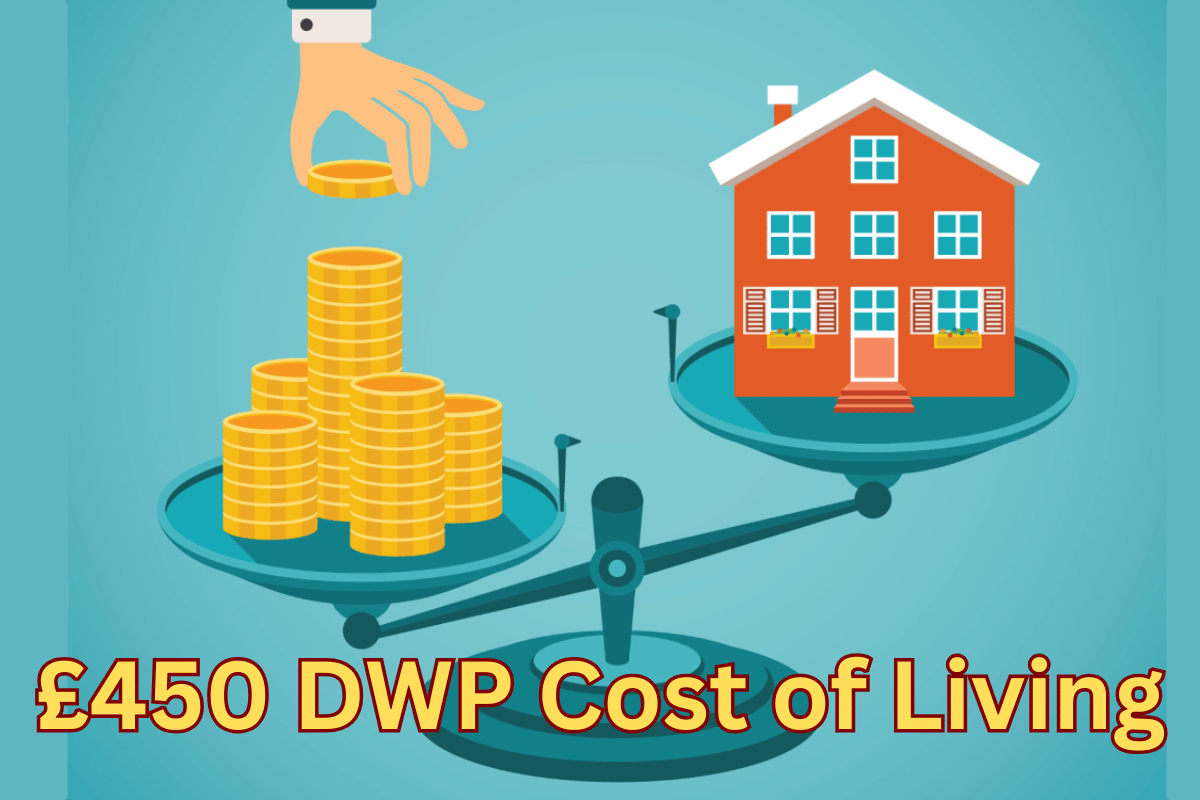In response to continued inflation and the ongoing financial strain on millions of households, the UK government has confirmed a £450 Cost of Living Payment to be issued in May 2025. Administered by the Department for Work and Pensions (DWP), this one-off payment aims to ease the burden on those hit hardest by high energy prices, rent increases, and food inflation.
With many families still reeling from the economic fallout of recent years, this payment offers temporary relief—but it also raises questions about who qualifies, when it will be paid, and how it fits into the broader support landscape.

Contents
What Is the £450 Cost of Living Payment?
The £450 payment is a non-taxable, one-time grant that will be sent directly to eligible low-income households in May 2025. It’s part of the government’s Cost of Living Support Package, which has previously included:
-
Energy discounts,
-
Council tax rebates,
-
Food vouchers,
-
And similar direct payments in 2022, 2023, and 2024.
This year’s £450 payment replaces the £301–£900 tiered structure seen in previous years, streamlining support into a single universal amount for those who meet the eligibility criteria.
Who Is Eligible for the £450 Payment?
To qualify, recipients must be receiving specific means-tested benefits during the qualifying period, which has been set as March 11 to April 7, 2025. The eligible benefits include:
-
Universal Credit (excluding those with a ‘zero award’),
-
Income-based Jobseeker’s Allowance (JSA),
-
Income-related Employment and Support Allowance (ESA),
-
Income Support,
-
Pension Credit,
-
Working Tax Credit and Child Tax Credit (administered by HMRC).
Note: People receiving only contributory or new-style JSA/ESA do not qualify, as these are not means-tested benefits.
Additionally, households must have had an active claim during the qualifying window and must not be subject to sanctions that would have resulted in a zero benefit award (unless it was due to deductions).
When Will It Be Paid?
The DWP will begin issuing payments from May 13, 2025, with most recipients expected to receive the money by the end of the month. Here’s how the timeline is expected to roll out:
-
May 13–24: Payments to most Universal Credit, Income Support, and Pension Credit recipients.
-
May 20–31: Payments to those on Tax Credits, issued by HMRC.
There is no need to apply. Payments will be made automatically into the same bank account used for benefit payments. Any delays or issues should be reported via the DWP’s helpline or Universal Credit journal.
How Will You Receive It?
The £450 will appear in your bank statement with a reference code, likely something like:
DWP COLP May 2025 or HMRC COLP May 2025, depending on the issuing body.
Because it is not taxable, it will not count towards benefit calculations, and it won’t affect your existing entitlements in any way. You can spend it freely—whether on food, fuel, rent, or other essential needs.
Why Was This Payment Introduced?
The government cites continued high living costs as the reason for the new payment. According to recent data:
-
Food inflation has remained above 8%,
-
Average household energy bills are still nearly £1,800 per year,
-
Rents across the UK have reached record highs.
Many low-income households, including working families and pensioners, have been unable to keep pace. The £450 grant is seen as short-term financial relief, especially in the absence of further universal energy bill subsidies.
While appreciated by many, critics argue it’s a band-aid solution, with calls growing for more permanent benefit increases, affordable housing schemes, and energy price regulation.
Who Will Benefit Most?
This payment will significantly assist:
-
Single-parent households,
-
Elderly pensioners living alone,
-
Disabled individuals on low incomes,
-
Working poor families who rely on top-up benefits like Universal Credit or Tax Credits.
It will also help those in rented accommodation, many of whom are simultaneously facing rising rents and council tax bills.
Beware of Scams
Whenever large-scale payments are announced, fraudulent messages and phishing scams tend to follow. Be alert to:
-
Emails or texts asking you to “claim” your payment,
-
Links to unofficial websites,
-
Calls demanding your bank details.
The DWP will never ask for your personal information in relation to this payment. If in doubt, contact the official helpline or check GOV.UK for updates.
What If You Don’t Get Paid?
If you believe you’re eligible but haven’t received your payment by May 31, 2025, you should:
-
Wait until June 1, as some payments may be delayed.
-
Check your benefit account to ensure your details are up to date.
-
Contact DWP or HMRC depending on which benefit you receive.
It’s also recommended to contact a welfare advisor through Citizens Advice or local charities for support in case of disputes.
Conclusion: Temporary Relief, Not a Solution
The £450 Cost of Living Payment will offer real and immediate help to millions of struggling UK households. However, it’s a short-term solution to a long-term crisis. With inflation lingering and real wages stagnating, structural reform of benefits, housing, and utility markets is still urgently needed.
For now, though, eligible families can look forward to a much-needed cash boost in May 2025—without having to jump through bureaucratic hoops.

Rohan Manjrekar is a writer and consultant in scholarships and financial aid, dedicated to simplifying college funding. His work focuses on debt reduction and maximizing educational access for students from all backgrounds.
